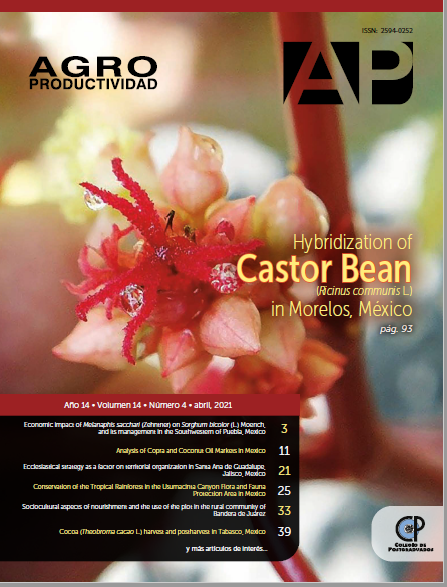Ecclesiastical strategy as a factor on territorial organization in Santa Ana de Guadalupe, Jalisco, Mexico
##plugins.themes.bootstrap3.article.main##
Keywords
local development, social partners, religious activities.
Resumen
Objective: The objective was to study the territorial organization strategy of local actors;
church, government and population that influenced the evolution and current
organization of the town of Santa Ana de Guadalupe after the canonization of the priest
Toribio Romo.
Design / Methodology / Approach: The local development methodology was applied,
through specific interviews with representatives of social partners; local church,
government, and population.
Results: It was found that the infrastructure and equipment of the Saint’s Temple, which
receives more than 700 thousand visitors a year, shows potentialities, strengths and
limitations at the locality. Analyzing the territory, through its economic, political, socio-
cultural, and environmental axes, it was noted that local development is a process of
growth and structural change in which the main interest of the town is to increase
employment and meeting the needs and demands of religious pilgrims. As well as favor
the appropriate use of the resources, and over-all potential of the locality in order to
improve the standard of living of the population.
Limitations of the study / Implications: The strategies of cooperation and knowledge
of the ecclesiastical agents in conjunction with the government and local population
through joint organization contribute to the transformation of Santa Ana de Guadalupe.
Findings / Conclusions: It was observed that social partners (church, government and population) collaborate actively. Particularly in ecclesiastical activities to develop strategies (as organization and cooperation) to promote the local development.

